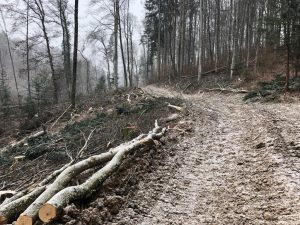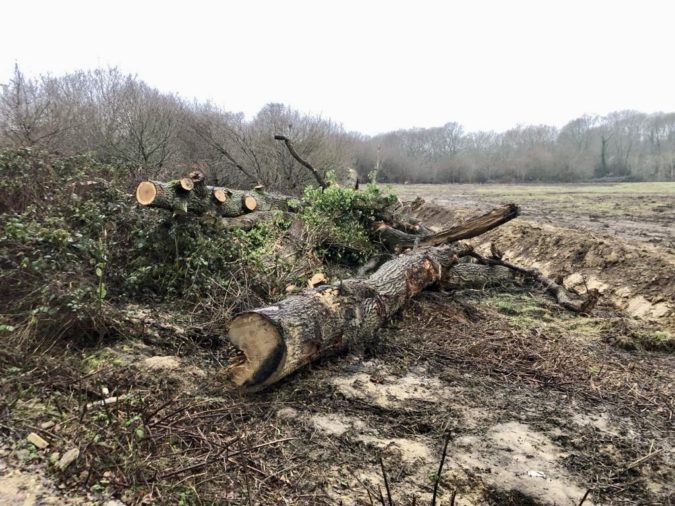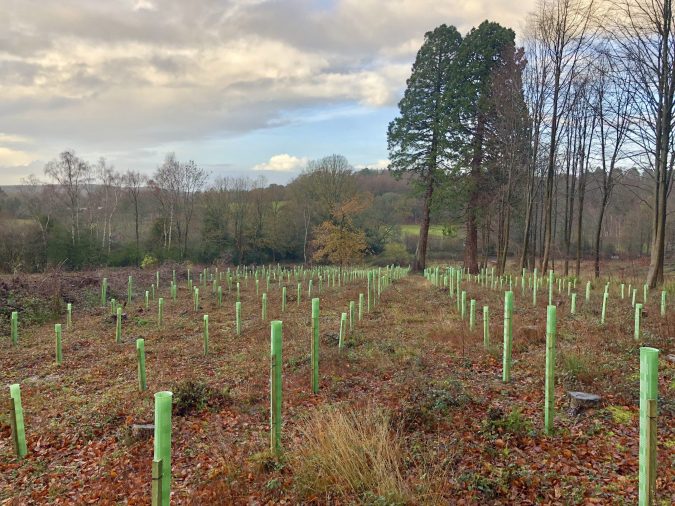Felling trees, planting trees.

In recent times, we have heard much about various initiatives to plant more trees, such as The Queen’s Green Canopy tree planting project to mark the platinum jubilee. Tree planting is part of the government’s plan to mitigate certain aspects of climate change as the trees will absorb carbon dioxide from the atmosphere, which is one of the principal greenhouse gases. Once absorbed and used in photosynthesis, much of this carbon is then locked away for many years in the form of complex compounds, such as cellulose and lignin.
The peak of carbon dioxide uptake by UK woodlands and forests was estimated to be just under 20 million tonnes in 2009. However, since that time the amount has actually declined. Many of the conifer plantations that were planted back in the 1970’s and 1980’s have now been felled / harvested, so they no longer contribute to the uptake of carbon dioxide. It is important that these clear felled areas are replanted and tree cover restored; indeed, in places increased. Planting rates have risen in Scotland but the performance by the rest of the UK is somewhat limited. Even with new planting, it takes time for such new forests / woodlands to reach the CO2 absorption levels seen in the 2000’s. Continuous cover forestry (CCF) is a different approach to woodland forest management; it seeks to avoid clear felling and promotes a mosaic of trees by age and species.
 There are a number of factors that influence new planting, such as the availability of land. Using high grade agricultural land for tree planting would affect targets for increased agricultural productivity and domestic food supply. Also, with climate change and the increasing number of extreme weather events (storms, flooding, drought etc) greater thought needs to be given to risks such as forest fires. Recent months have demonstrated the ferocity of forest fires in France, California and Portugal. We cannot assume that the UK will be exempt from such events.
There are a number of factors that influence new planting, such as the availability of land. Using high grade agricultural land for tree planting would affect targets for increased agricultural productivity and domestic food supply. Also, with climate change and the increasing number of extreme weather events (storms, flooding, drought etc) greater thought needs to be given to risks such as forest fires. Recent months have demonstrated the ferocity of forest fires in France, California and Portugal. We cannot assume that the UK will be exempt from such events.
Similarly, we have witnessed powerful storms (such as Storm Arwen) which felled many thousands of trees (and impacted on public services such as electricity and train travel). The warming climate is also associated with ‘new’ diseases and parasites in our woodlands and forests. New planting needs resilience ‘built in’ to the plan.

The Environment, Food and Rural Affairs Committee in its recent report (2021/2) has made a number of important comments in relation to tree planting in the UK, notably :
- It noted that the Forestry Commission had said that nurseries in the UK will struggle to expand production to deliver the number of young trees required for the Government to achieve its planting ambitions.
- There is a lack of a sufficiently skilled and large workforce to achieve England’s tree planting ambitions.
- To meet the Government’s tree planting goals, the UK will need to import seeds and young trees (until domestic capacity increases); and this carries the risk of the introduction of pests and diseases.
Comments are closed for this post.
